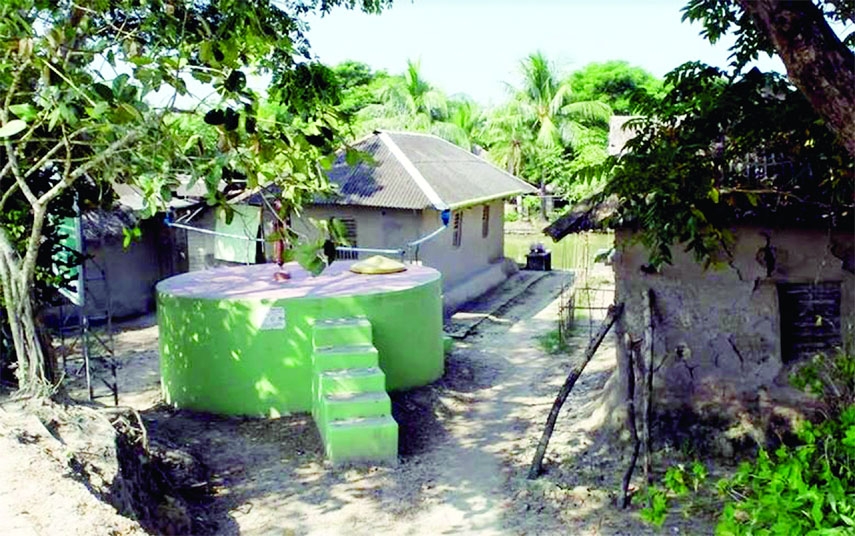
BSS, Rajshahi :
Managed aquifer recharge, a water treatment approach, can be the best way of halting the gradual lowering of groundwater because it has a bigger role in enriching the underground water level in the water-stressed high Barind Tract.
Experts said the drought-prone area is turning into an extreme drought zone owing to scarcity of water due to various reasons, including the adverse impact of climate change and other environmental degradations.
So, optimum aquifer recharge in the Barind area has become crucial to protect its overall public health alongside the existing agricultural ecosystem through managing a groundwater basin efficiently and effectively.
In some of the areas, people, however, are now becoming more conscious to halt the alarming decline of the groundwater layer. Aquifer recharge activities are being done at household level side by side with various institutions and industries artificially. Nasrin Begum, 38, has exposed herself as potential for managed aquifer recharge (MAR) since her engagement in the process in the drought-prone Barind area for the last couple of years.
Begum, wife of Muhammad Sumon of Ishwaripur village in Dewpara Union under Godagari Upazila of Rajshahi district, has been harvesting rainwater and inserting those to the underground since 2017 last.
She told BSS that they have arrangements of harvesting all the rainwater from the rooftop of our tin-shed house and injecting those to the underground. The continuous artificial aquifer recharge has already started benefiting them.
Begum is using the conserved water for household purposes through a tap fixed in the lower part of the tank. Surplus water is being conserved in the recharge tank through another upper portion wide pipe.
Earlier, there was no water in hand-driven tube-wells from March to June every year causing huge sufferings to the people, particularly the marginal ones. But, the troubled situation has started changing as a result of promoting MAR, a modern technology of artificial aquifer recharge, at present.
Many other households, business establishments and local government institutions like Nasrin Begum have installed MAR technology in the drought-hit Barind area.
They are getting technical and financial assistance from the Integrated Water Resource Management (IWRM) Project for successful and effective promotion of MAR along with its operation.
“150 MAR in community level, 43 in local government institutions and four other in business establishments have, so far, been installed in the drought-affected areas,” said Jahangir Alam Khan, coordinator of IWRM project.
DASCOH Foundation and Swiss Red Cross are jointly implementing the IWRM project in drought affected 42 union Parishads and three Pourasabhas under eight upazilas in Rajshahi, Naogaon and Chapainawabganj districts since 2015 supported by Switzerland.
Jahangir Khan said the drought-hit barind are also becoming habituated in rainwater harvesting to mitigate their water crises. The villagers collect and use more than 6.12 crore litres of rainwater through the 1,260 households level installations every year
Saidur Rahman, Mayor of Mundamala pourashava, said underground water level has started rising by dint of promoting the technology although it has been installed in limited scale.
He said there is a big scope of elevating the groundwater level through large-scale promotion of the technology as the issue of abnormal lowering of underground water layers has become a grave concern in the high Barind tract.
Rahman advocated for incorporating the MAR issue in the existing house building policy so that it can be mandatory in each of the houses for the sake of halting the alarming rate of declining underground water.
Niamul Bari, professor of the Department of Civil Engineering in Rajshahi University of Engineering and Technology (RUET), said managed aquifer recharge and rainwater harvesting might be the potential means of mitigating the households’ level water crises, particularly during the dry season.
He added that there are scopes of storing rainwater during the monsoon if the community people were equipped with infrastructures necessary for the purpose.

